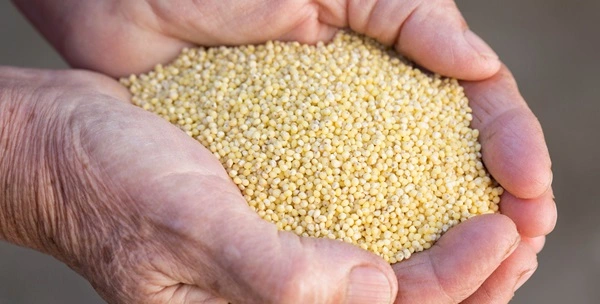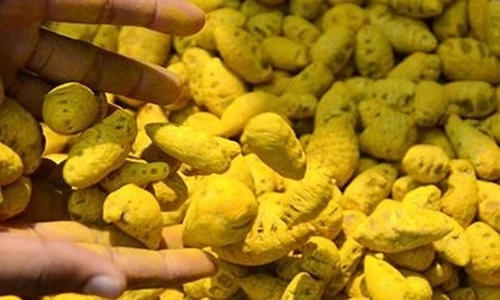Millets, often referred to as nutri-cereals, are a group of small-seeded grains that have been an integral part of Indian agriculture for centuries. Known for their ability to thrive in drought-prone, arid, and semi-arid regions, millets play a crucial role in ensuring food security, improving soil fertility, and combating malnutrition. They are rich in proteins, dietary fiber, iron, calcium, antioxidants, and other essential nutrients, making them a superfood for modern diets.
India is the largest producer of millets in the world, with major varieties grown in states like Rajasthan, Karnataka, Maharashtra, Tamil Nadu, Uttar Pradesh, Telangana, and Andhra Pradesh. Millets are primarily categorized into:
- Major Millets – Pearl Millet, Finger Millet, Sorghum.
- Minor Millets – Foxtail Millet, Proso Millet, Barnyard Millet, Kodo Millet, Little Millet, Browntop Millet.
This article highlights more than 10 top millet varieties cultivated in India, their characteristics, regions, and specific uses.

1. Pearl Millet (Bajra)
Pearl Millet, known as “Bajra”, is the most widely grown millet in India due to its high adaptability and nutritional value.
- Scientific Name: Pennisetum glaucum
- Regions: Rajasthan, Gujarat, Maharashtra, Uttar Pradesh, Haryana
- Varieties:
- HHB 67: Early maturing hybrid variety, resistant to drought.
- ICTP 8203: High-yielding and disease-resistant variety.
- RHB 177: Ideal for rainfed areas.
- Nutritional Benefits: High in energy, iron, and protein.
- Uses: Rotis, porridge, animal fodder, and fermented foods.
2. Finger Millet (Ragi)
Finger Millet, or “Ragi”, is a nutrient-rich millet popular for its health benefits.
- Scientific Name: Eleusine coracana
- Regions: Karnataka, Tamil Nadu, Andhra Pradesh, Maharashtra
- Varieties:
- GPU 28: High-yielding variety with good disease resistance.
- PRM 1: High protein content, suitable for hill regions.
- Indaf 9: Early maturing variety with excellent yield.
- Nutritional Benefits: Rich in calcium, iron, and amino acids.
- Uses: Ragi flour for rotis, porridge, malt, biscuits, and baby food.
3. Sorghum (Jowar)
Sorghum, also known as “Jowar”, is an important millet grown for food, fodder, and industrial purposes.
- Scientific Name: Sorghum bicolor
- Regions: Maharashtra, Karnataka, Andhra Pradesh, Tamil Nadu
- Varieties:
- CSH 16: High-yielding hybrid variety.
- CSV 20: Resistant to drought and pests.
- Maldandi: Suitable for traditional food preparation.
- Nutritional Benefits: Rich in dietary fiber, protein, and antioxidants.
- Uses: Rotis, porridge, animal feed, and biofuel.
4. Foxtail Millet (Kangni)
Foxtail Millet, called “Kangni”, is a fast-growing small millet ideal for semi-arid regions.
- Scientific Name: Setaria italica
- Regions: Karnataka, Andhra Pradesh, Tamil Nadu, Maharashtra
- Varieties:
- SIA 3085: High-yielding and pest-resistant variety.
- HMT 100-1: Excellent grain quality and yield.
- SiA 3156: Drought-tolerant variety.
- Nutritional Benefits: High in protein, iron, and dietary fiber.
- Uses: Idli, dosa batter, porridge, and snack preparations.
5. Barnyard Millet (Sanwa)
Barnyard Millet, known as “Sanwa”, is valued for its quick maturity and nutritional benefits.
- Scientific Name: Echinochloa frumentacea
- Regions: Tamil Nadu, Uttarakhand, Andhra Pradesh, Karnataka
- Varieties:
- VL 207: High-yielding variety for hill regions.
- CO 2: Suitable for multiple cropping systems.
- Nutritional Benefits: Low glycemic index, high fiber content.
- Uses: Khichdi, dosa, and fasting foods.
6. Little Millet (Kutki)
Little Millet, or “Kutki”, is a climate-resilient millet grown in marginal soils.
- Scientific Name: Panicum sumatrense
- Regions: Tamil Nadu, Karnataka, Andhra Pradesh, Chhattisgarh
- Varieties:
- CO 4: High-yielding with good disease resistance.
- TNAU 86: Suitable for rainfed areas.
- Nutritional Benefits: High in magnesium, zinc, and fiber.
- Uses: Porridge, upma, and gluten-free baking.
7. Kodo Millet (Kodra)
Kodo Millet, called “Kodra”, is drought-resistant and grows well in poor soils.
- Scientific Name: Paspalum scrobiculatum
- Regions: Tamil Nadu, Maharashtra, Chhattisgarh, Madhya Pradesh
- Varieties:
- CO 3: High-yielding and tolerant to diseases.
- TNAU 86: Drought-tolerant and suitable for rainfed farming.
- Nutritional Benefits: Rich in antioxidants and fiber.
- Uses: Khichdi, dosa, idli, and health mixes.
8. Proso Millet (Chena)
Proso Millet, or “Chena”, matures quickly and requires minimal inputs.
- Scientific Name: Panicum miliaceum
- Regions: Uttar Pradesh, Bihar, Maharashtra, Tamil Nadu
- Varieties:
- CO 5: High-yielding and pest-tolerant.
- HMT 92: Early maturing variety.
- Nutritional Benefits: High in protein and low glycemic index.
- Uses: Bread, porridge, and snacks.
9. Browntop Millet
Browntop Millet is a minor millet that grows well in semi-arid regions.
- Scientific Name: Brachiaria ramosa
- Regions: Karnataka, Tamil Nadu, Andhra Pradesh
- Varieties:
- DHFT 109-3: Drought-tolerant and high yielding.
- Nutritional Benefits: High in protein, fiber, and minerals.
- Uses: Porridge, dosa, and health foods.
10. Teff Millet
Teff Millet, though less common in India, is gaining popularity for its high nutritional value.
- Scientific Name: Eragrostis tef
- Regions: Small-scale cultivation in Tamil Nadu and Karnataka
- Characteristics:
- Rich in protein, calcium, and iron.
- Uses: Gluten-free baking, porridge, and energy foods.
FAQs
Q1: Which millet is the most widely grown in India?
A: Pearl Millet (Bajra) is the most widely grown millet in India, especially in Rajasthan and Gujarat.
Q2: Which millet is best for diabetics?
A: Foxtail Millet, Barnyard Millet, and Kodo Millet are low glycemic index grains, ideal for diabetics.
Q3: What are the benefits of Finger Millet (Ragi)?
A: Ragi is rich in calcium, iron, and essential amino acids, making it excellent for bone health and anemia prevention.
Q4: Which millet is most suitable for drought-prone regions?
A: Kodo Millet, Pearl Millet, and Proso Millet are highly drought-resistant and thrive in semi-arid regions.
Q5: How are millets used in Indian cuisine?
A: Millets are used for making rotis, dosas, idlis, porridge, khichdi, and gluten-free baked goods.
Conclusion
Millets are climate-resilient, nutritious, and sustainable crops that address food security and health challenges. Varieties like Bajra, Ragi, Jowar, Foxtail Millet, and Barnyard Millet are essential for Indian agriculture, offering solutions for drought-prone areas and health-conscious diets. Promoting millet cultivation ensures sustainable farming and healthier food systems for future generations.

